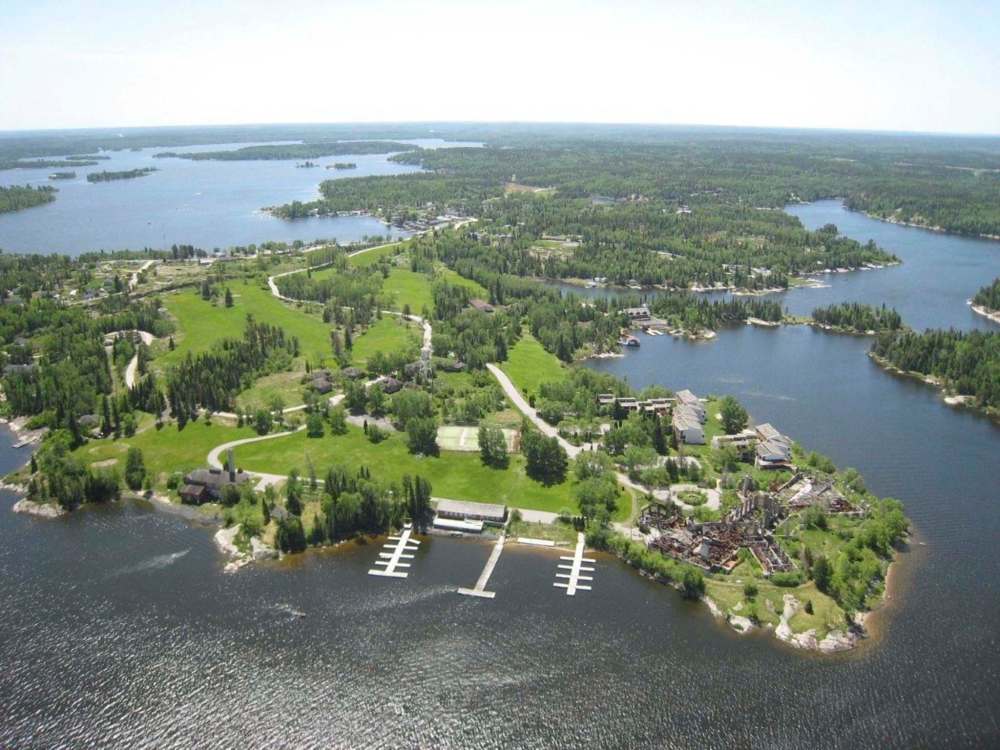Minaki development plan mired in red tape, disputes
Contradictory government, municipal board rulings muddy Minaki's waters
Advertisement
Read this article for free:
or
Already have an account? Log in here »
To continue reading, please subscribe:
Monthly Digital Subscription
$19 $0 for the first 4 weeks*
- Enjoy unlimited reading on winnipegfreepress.com
- Read the E-Edition, our digital replica newspaper
- Access News Break, our award-winning app
- Play interactive puzzles
*No charge for four weeks then billed as $19 plus GST every four weeks. Offer only available to new and qualified returning subscribers. Cancel any time.
Read unlimited articles for free today:
or
Already have an account? Log in here »
Hey there, time traveller!
This article was published 13/11/2017 (2614 days ago), so information in it may no longer be current.
A long-standing dispute over how the former Minaki Lodge property in northwestern Ontario should be redeveloped appears far from over.
After more than half a decade of studies, hearings and negotiations, an Ontario government department last year approved a plan by three Steinbach developers to convert 120 vacant hotel rooms on the property into 56 apartment-style, seasonal condominiums, and to convert 119 existing lots into 82 seasonal cottage lots.
But that decision didn’t sit well with year-round area residents and cottagers, who argue such a development would be far too big. So they appealed the department’s decision to the Ontario Municipal Board (OMB).

After holding a two-week hearing last summer in Kenora, the OMB recently ruled in favour of the residents and cottagers. So the developers — Bob Schinkel and Bob and David Banman — have applied for leave to appeal that decision to Ontario’s Divisional Court.
Minaki Cottagers Association (MCA) president Mark Engebretson said Monday their lawyer told them it typically takes four to six months just for the leave-to-appeal application to be heard. If leave is granted, it’s unclear how long it would take for a hearing to be held and a ruling to be rendered.
David Banman said the developers are not sure either. But if it’s going to take too long, they will consider other options for the property, he added.
“We’ve already spent a lot of time here and I think… in the next couple of years something has to shake loose.”
Banman said other options include converting the 119 existing lots into seasonal sites and renting them out to campers or to recreational vehicle (RV) owners; and leasing the lots on a long-term basis to people who could put a cottage or modular-home on the lot.
“There are probably four or five different ways we could look at using the property the way it is,” Banman said.
“But we really liked the idea of letting them get an actual title to their property so they’d have some pride of ownership in the property.”
Engebretson, who lives in Minneapolis, said the year-round residents and existing cottagers want the Minaki property redeveloped, but not on the scale Schinkel and the Banmans are proposing. Not only do they fear it would overtax the sewage treatment plant on the site, they fear it would create too much traffic on that small section of the Winnipeg River.
“That many residences, that many people…. that many boats, that much recreational water activity would all be profoundly contrary to Minaki’s history and character and very likely could be potentially injurious to the tourism industry on which Minaki depends,” Engebretson said. “It’s just out of scale. It’s out of context.”
He said 15 to 20 cottages would be more in keeping with the low-density development that now exists in the area.
The OMD member who heard the appeal didn’t rule on those issues. Instead, she ruled against the development proposal on the grounds that the existing sewage treatment plant would be communally owned by the members of the condo association and Ontario government regulations prohibit that kind of arrangement in an “unorganized” territory such as Minaki, where there is no municipal backup.
As such, each cottage lot in such an area has to have its own septic field, she said.
The developers argue a government department already approved their sewage treatment plan, and the OMB had no authority to overturn that decision. But the residents and cottagers maintain the government regulations are clear and the government department shouldn’t have approved the plan in the first place.
murray.mcneill@freepress.mb.ca
History
Updated on Wednesday, November 15, 2017 11:09 AM CST: Corrects photo caption.


